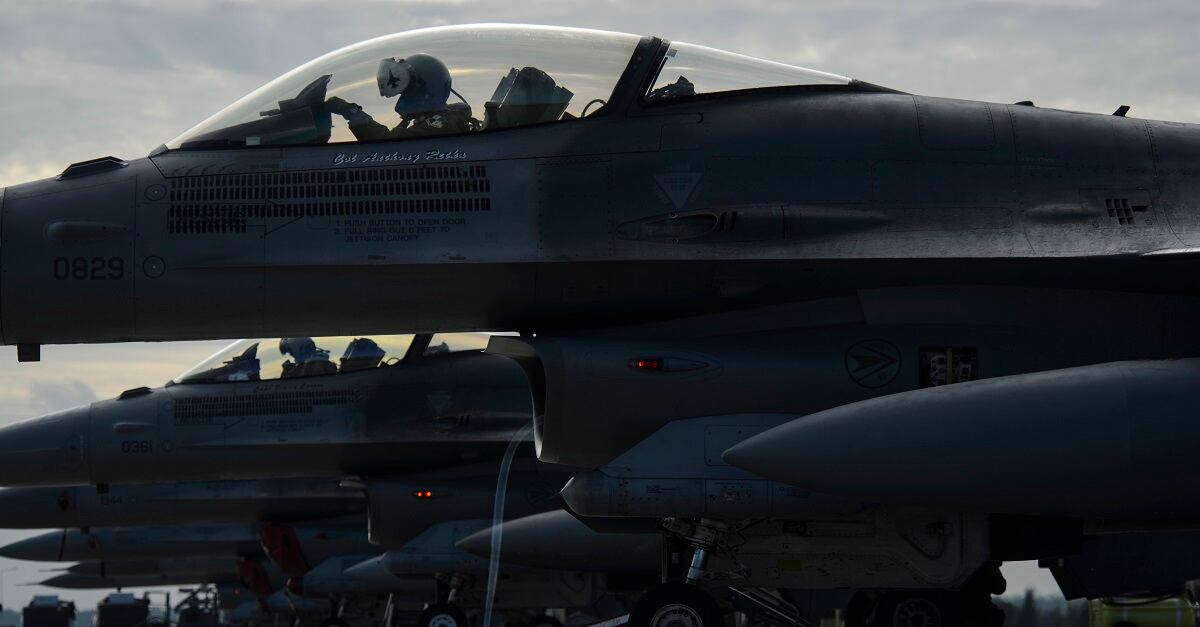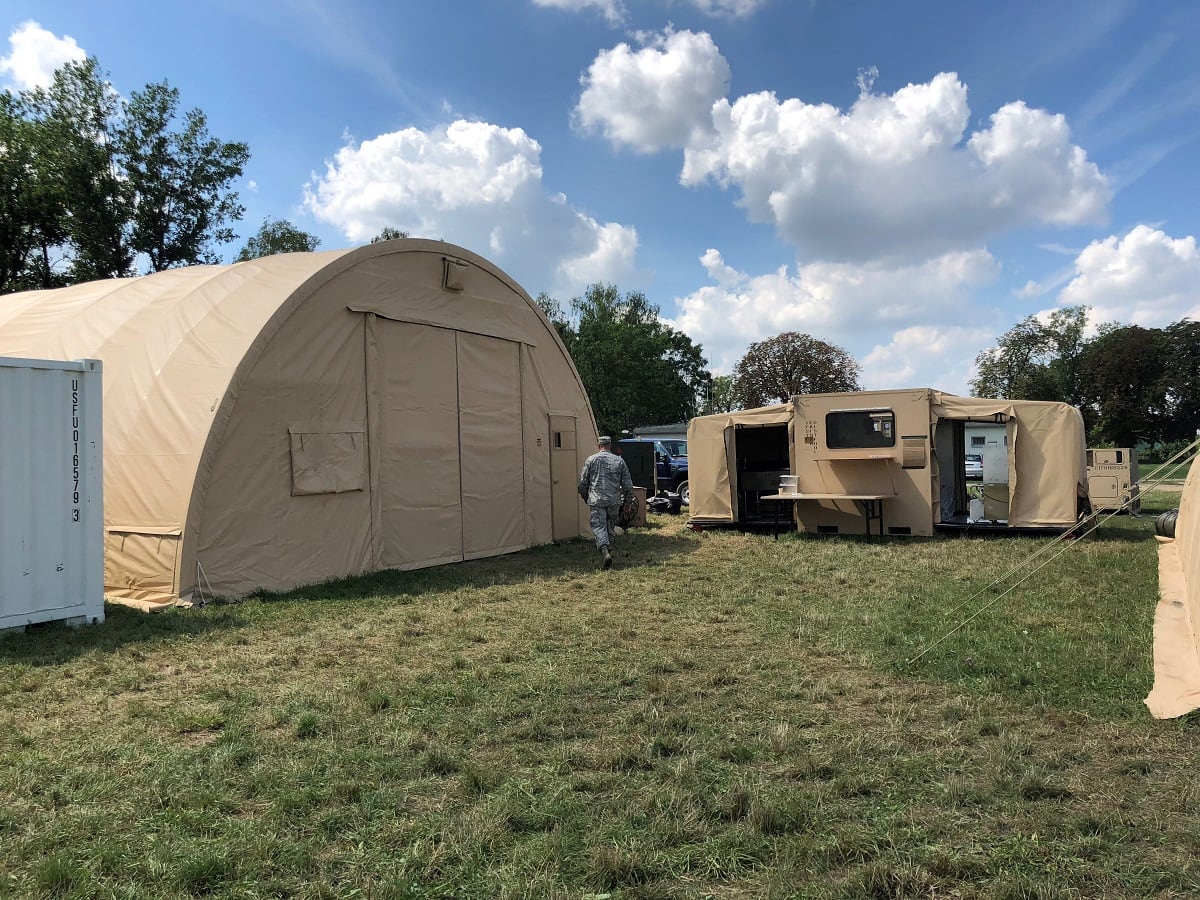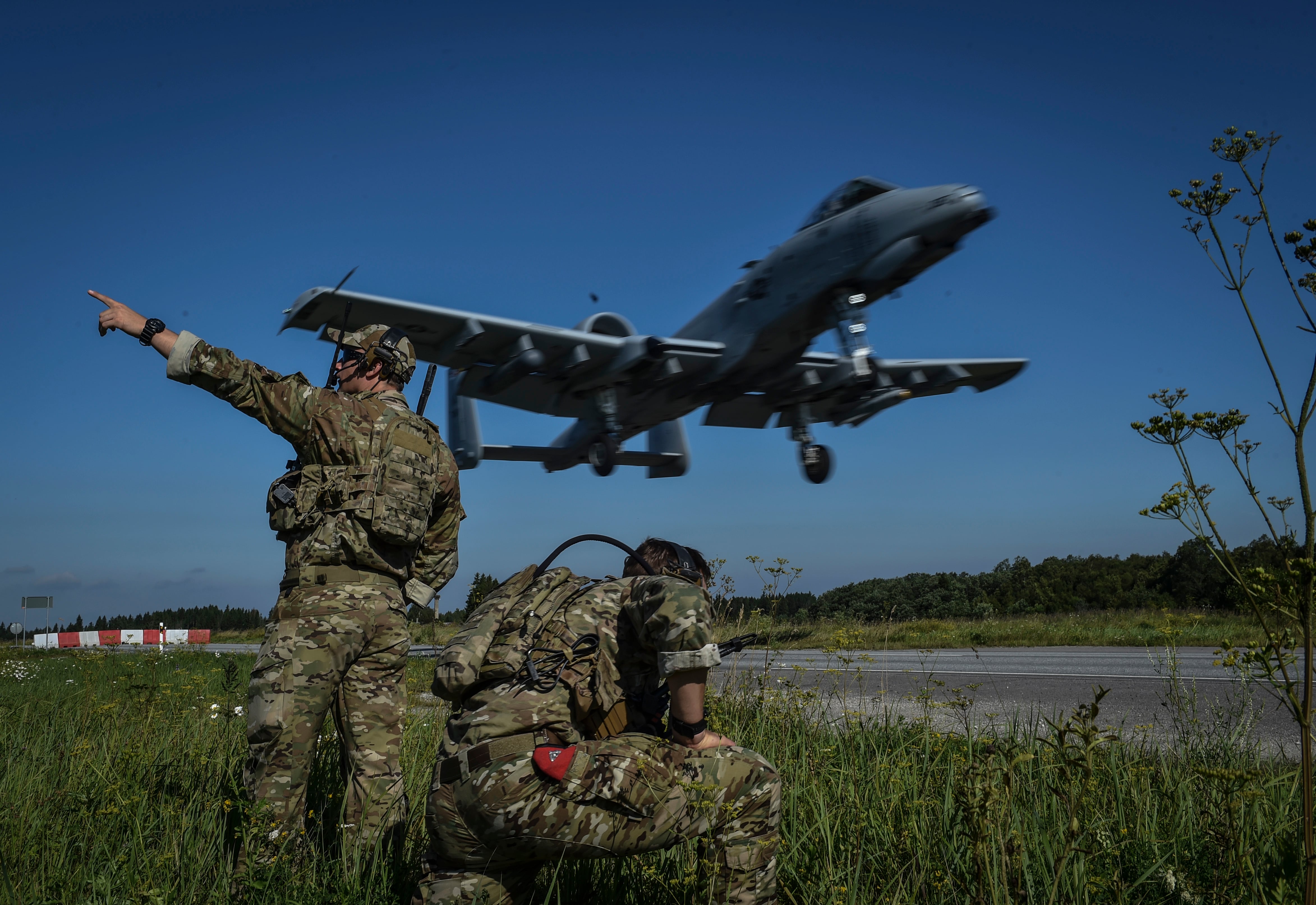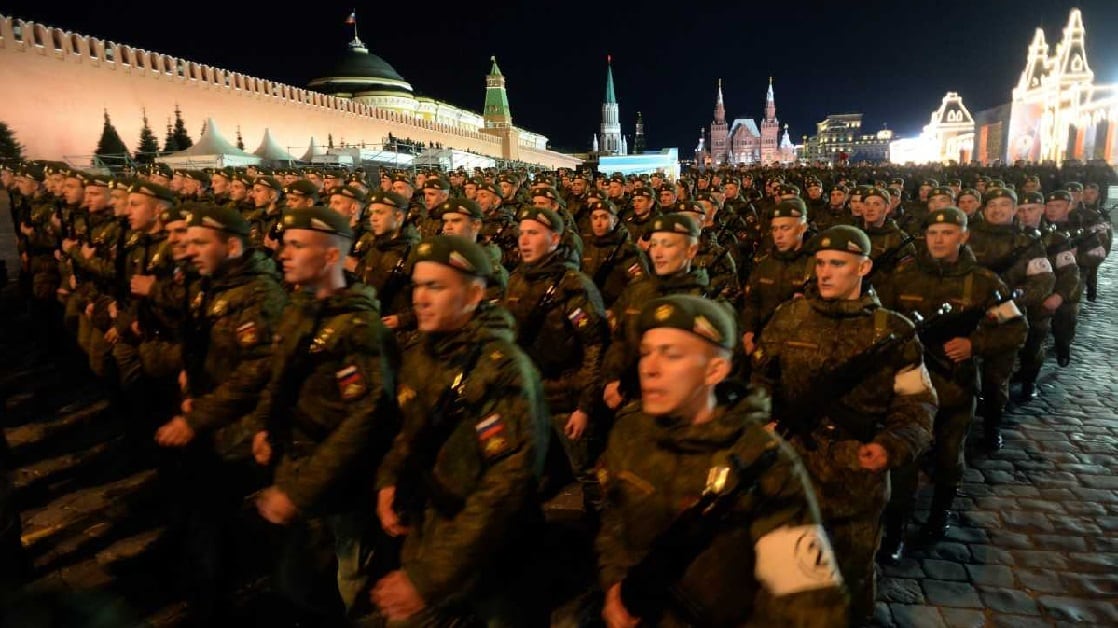Europe continues to be a growth point for the Air Force as concerns about Russian intentions mount. International exercises, base funding and missions on the continent are all on an upward swing.
This year, U.S. airmen trained across Europe with allies in large-scale exercises like Sabre Strike and BALTOPS. August marked the return of F-22 stealth fighters to the continent, which trained with Air Force and allied forces, “including partner-nation fifth-generation assets, to build on the integration from previous deployments,” said Gen. Tod Wolters, U.S. Air Forces Europe and U.S. Air Forces Africa commander. “The integration of fifth-generation assets allows the coalition to maintain the air superiority advantage by complementing the capabilities of our powerful fourth-generation fleet.”
Additionally, the Air Force has used the European theater as a testing ground for the proof of concept of a forward-deployed air base system.
“Looking into fiscal year 2019, we are proposing a [European Defense Initiative] budget that demonstrates the U.S. commitment to NATO,” Wolters said during a teleconference hosted from Brussels, Belgium, in July.

“Our total [U.S. European Command] request includes a significant funding increase from $4.7 billion to $6.5 billion,” he said. “While the proposed increased funding is welcome news, what we need is consistent funding that is steady, stable and predictable, that will continue to improve our readiness and advance the lethality of our forces.”
The funding request and aircraft deployments line up well with the National Defense Strategy, which prioritizes preparations for a great power confrontation with Russia or China over low-intensity conflicts like those of the Global War on Terror.
“That [defense strategy] marks America’s emergence from strategic atrophy,” Defense Secretary Jim Mattis said at the 2018 National Guard Association conference in New Orleans this August. “We are going to strengthen alliances with partners and allies and we’re going to create new partnerships and allies.”
That emphasis on partnerships is in full swing in Europe.
RELATED

The Pentagon has been pre-positioning Air Force basing assets in original NATO nations — to include Germany and the United Kingdom — and making significant airfield improvements in Eastern Bloc countries. During Saber Strike 2018, for instance, Air Force special tactics operators practiced rough landings with A-10 Warthogs on improvised runways in Estonia and Latvia.
Elsewhere on Russia’s doorstep, the 2018 defense budget provided funding for refueling infrastructure and a tactical fighter aircraft parking apron and taxiway at Amari Air Base, Estonia. The 2019 defense budget request is asking for an additional $16 million more for training facilities at Amari to be used by U.S. Special Operations Command.
Another $56 million from the 2018 budget was pushed to Kecskemet Air Base, Hungary, to pay for fuel storage, taxiway construction and other base improvements to accommodate the F-15, A-10 and C-5 transport aircraft.

The 2019 budget also includes funds to build a munitions storage facility at Malacky Air Base, Slovakia, and to build a taxiway at Rygge, Norway.
The Air Force tested its Deployable Air Base System, or DABS, in Poland this summer. The system provides “enhanced pre-positioning of U.S. equipment, increases responsiveness and readiness by pre-positioning ammunition, fuel and equipment, and improves infrastructure to enhance our ability to provide a rapid response,” Wolters said.
Were a war to kick off between the United States and Russia, the Air Force is operating under the assumption that it cannot rely on its major air hubs in the United Kingdom, Italy and Germany alone.
The Russian Federation is not oblivious to the spending increases, training exercises and infrastructure investment, though.
Russia just hosted its largest military drills in nearly four decades on its eastern flank with NATO, Sept. 11-15.
RELATED

Russian Defense Minister Sergei Shoigu announced last month that the Vostok-2018 exercise this September would involve as many as 300,000 troops, 1,000 aircraft and 900 tanks with units from China and Mongolia joining in.
The drills will be “on an unprecedented scale both in terms of the area covered and in terms of the numbers,” Shoigu told Russian state media.
Military Times ground combat reporter Todd South and Defense News air warfare reporter Valerie Insinna contributed to this report.
Kyle Rempfer was an editor and reporter who has covered combat operations, criminal cases, foreign military assistance and training accidents. Before entering journalism, Kyle served in U.S. Air Force Special Tactics and deployed in 2014 to Paktika Province, Afghanistan, and Baghdad, Iraq.




